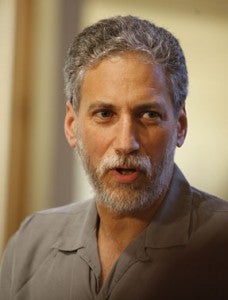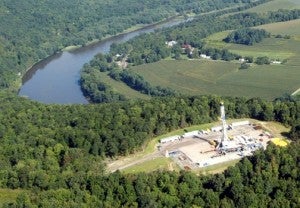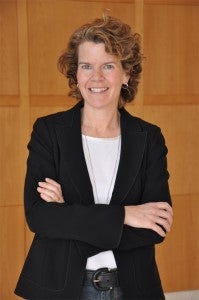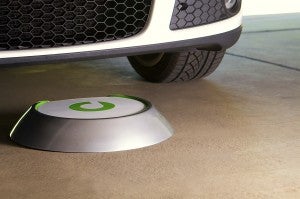This commentary was originally posted on EDF’s Texas Clean Air Matters blog.
Good news came out of the fiscal cliff ordeal last week when Congress voted to extend the Production Tax Credit (PTC) for renewables, which had expired on January 1. While the 2.2 cent-per-kilowatt-hour credit has only been extended through 2013, it provides some certainty to an industry that was holding its breath. As we’ve discussed previously, while the tax breaks for the oil and gas industry are written into the permanent tax code, the credits for wind and other renewables are not. Created under the Energy Policy Act of 1992, the PTC income tax credit is allowed for the production of electricity from utility-scale wind turbines, geothermal, solar, hydropower, biomass and marine and hydrokinetic renewable energy plants.
While this extension through the year does not appear to provide a great deal of long-term certainty, my colleague Colin Meehan points out that “an important distinction with this extension is that prior to 2013, the tax credits were awarded to facilities operational by the end of 2012. The extension now applies to facilities for which construction begins by the end of 2013. As a result, this is more like a two-year extension.” Cameron Fredkin, director of project development at Cross Texas, further emphasizes the point by highlighting that “the key provision in the extension is the requirement to begin construction in 2013 versus previous one-year extensions that required wind developers to complete construction and begin operations in 2013. Wind developers in the Panhandle region in the interconnection study process would have had difficulty achieving commercial operations in 2013.”
According to the American Wind Energy Association, “America’s 75,000 workers in wind energy are celebrating over the continuation of policies expected to save up to 37,000 jobs and create far more over time, and to revive business at nearly 500 manufacturing facilities across the country. Half the American jobs in wind energy – 37,000 out of 75,000 – and hundreds of U.S. factories in the supply chain would have been at stake had the PTC been allowed to expire, according to a study by Navigant Consulting.”
As I wrote back in November, many of those projects and jobs that were on the line while Congress delayed are here in Texas. In Amarillo, Walt Hornaday, president of Ceilo Wind Energy, said the tax credit helped “dust off projects [they] had put on the shelf.” Hornaday says he is “impressed wind was in the bill with big-ticket items like Medicaid and the Farm Bill. It used to be wind wouldn’t have a chance to be included. I thought we’d be left out in the cold.” According to The Hill, “The wind industry has floated a phase-out plan for the credit as a way to cement some stability and avoid annual battles to extend the credit. Securing the extension now sets the table for those discussions.”
Andy Geissbuehler, head of Alstom’s North American wind business, a manufacturer of wind turbine equipment, believes that “the extension of the Production Tax Credit for wind power is a positive development for our company, our customers, and the many workers across the country employed directly and indirectly by the wind power industry. As an equipment supplier, we stand ready to provide the equipment that can be manufactured in our Amarillo facility to project developers across North America. We remain optimistic about the long-term market for wind power market in North America, especially now that the U.S. Production Tax Credit has been extended another year.”
One possible casualty of Congress’ stalling is the $5 million, 80,000-square-foot facility left behind by Zarges Aluminum Systems. The German company planned to produce wind tower components, such as ladders and platforms. A spokesman at the time blamed the recession and uncertainty regarding the tax credits as well as low natural gas prices for putting pressure on its customers and the company itself.
This extension comes at a time when wind set a new record in 2012 by installing 44 percent of all new electrical generating capacity in America, according to the Energy Information Administration, leading the electric sector compared with 30 percent for natural gas, and lesser amounts for coal and other sources. Here in Texas, wind set another record, providing 8,638 megawatts (MW) of power on Christmas Day, with 6,600 MW coming from West Texas wind farms and 1,600 MW coming from the Texas coast. This adds up to nearly 26 percent of the system load, which is 117 MW higher than the previous record set in November 2012.
As Kent Saathoff, vice president of grid operations and system planning at the Electric Reliability Grid of Texas (ERCOT), points out, “Unlike traditional power plants, wind power output can vary dramatically over the course of a single day, and even more so over time. With new tools and experience, our operators have learned how to harness every megawatt of power they can when the wind is blowing at high levels like this.”
Those new tools and experience are exactly why the PTC is an important component of this emerging energy sector’s ability to grow and innovate, especially as ERCOT reviews an additional 20,000 MW of wind power capacity. This is in addition to the more than 10,000 MW it already has installed, which is the highest amount in the nation.
















